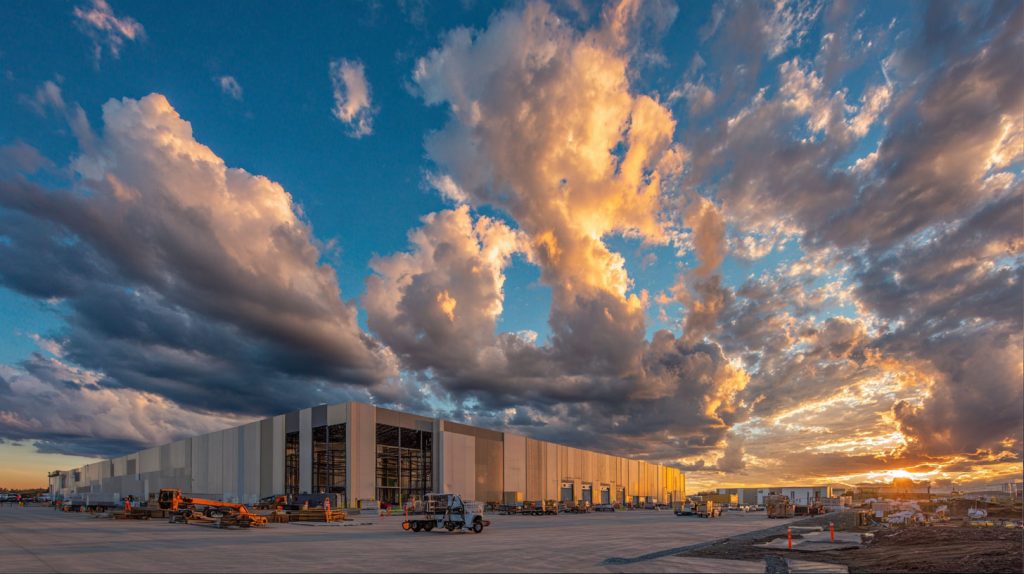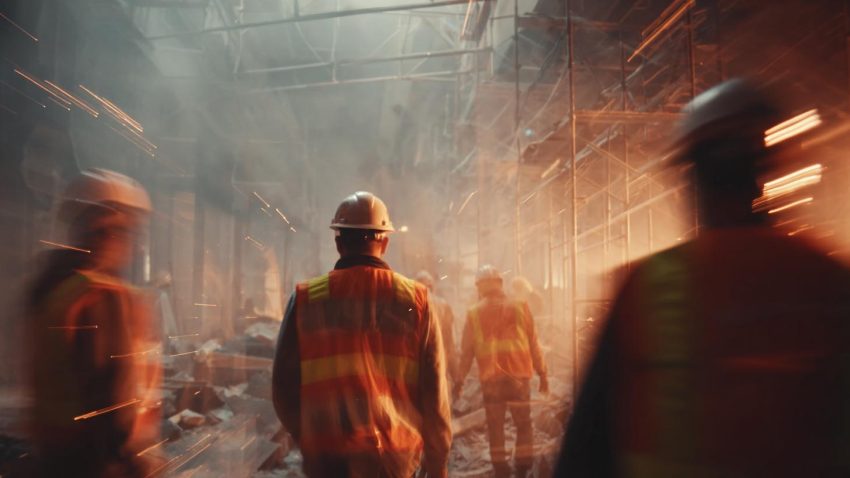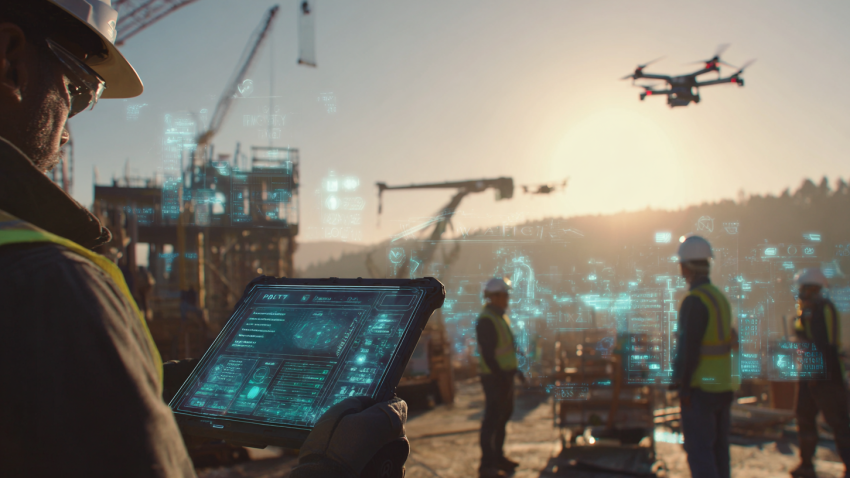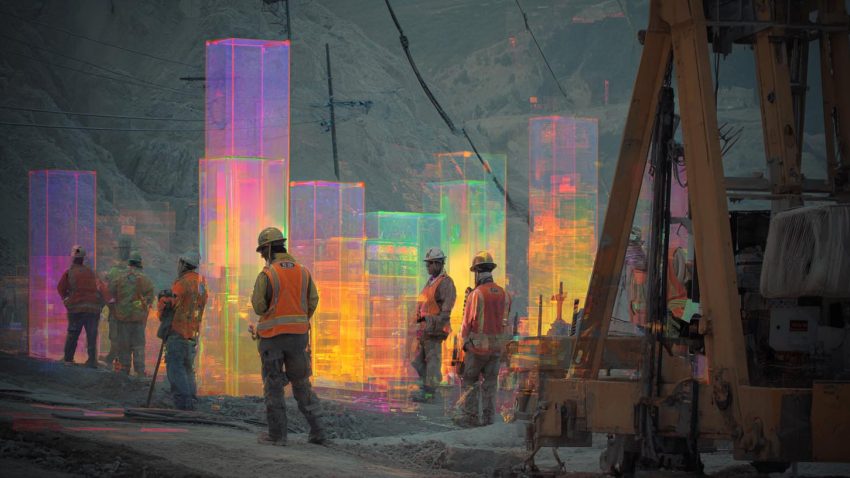What Is Quality Assurance (QA/QC) in Mission-Critical Construction and Why It’s Important for Hyperscale Projects
Table of Contents:
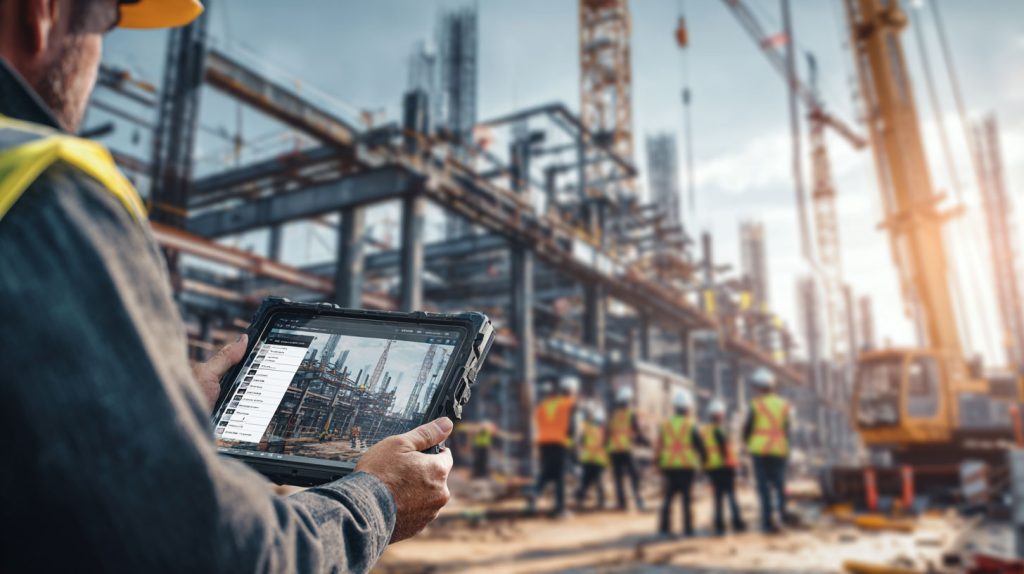
In mission-critical construction, quality is everything. Data centers, hospitals, and other high-availability facilities must operate continuously without failure, and even a small mistake during construction can lead to catastrophic downtime later. That’s why Quality Assurance (QA) and Quality Control (QC) are essential pillars of hyperscale project management—ensuring that every component, system, and process meets strict performance and reliability standards.
Unlike typical commercial projects, hyperscale builds have no tolerance for rework or inconsistency. The electrical, mechanical, and structural systems are interdependent—one wiring fault or mechanical leak can impact the entire facility. QA/QC programs help prevent these issues by enforcing rigorous inspections, documentation, and testing at every stage of construction.
For superintendents and contractors, QA/QC isn’t just about catching mistakes—it’s about building confidence. Owners and operators need assurance that their mission-critical infrastructure will perform at 100% reliability from day one. Through detailed procedures, pre-functional testing, and meticulous recordkeeping, QA/QC ensures every installation is verified, traceable, and ready for commissioning.
In this article, we’ll explain what QA/QC means in mission-critical construction, how it’s implemented across large-scale projects, and why digital tools like StruxHub are helping superintendents maintain quality documentation and accountability in real time.
Understanding the Role of QA and QC in Mission-Critical Construction
Quality Assurance (QA) and Quality Control (QC) are often used interchangeably, but they serve distinct roles in ensuring construction excellence.
- QA (Quality Assurance) is proactive—it focuses on planning and establishing procedures to prevent errors. This includes developing checklists, inspection processes, and training standards.
- QC (Quality Control) is reactive—it focuses on verifying that the work performed meets the standards defined by QA. QC teams conduct field inspections, material testing, and equipment verification to confirm compliance.
In mission-critical construction, both QA and QC work together to guarantee performance under extreme conditions. For hyperscale data centers, this means ensuring every cable termination, weld, and control system operates flawlessly before the facility goes live.
Superintendents rely on QA/QC as both a management framework and a risk mitigation strategy. When implemented correctly, it reduces rework, enhances documentation, and ensures the owner’s uptime requirements are met.
Top Benefits
- Prevents costly rework and operational disruptions.
- Ensures all systems meet performance and reliability benchmarks.
- Builds owner confidence through traceable, verifiable processes.
Best Practices
- Develop QA/QC plans during the design and preconstruction phases.
- Standardize documentation templates for inspections and testing.
- Involve all trades in QA/QC training and accountability meetings.
Q&A Mini Section
Q: What’s the main difference between QA and QC?
A: QA focuses on preventing errors before they happen; QC ensures completed work meets established standards.
Q: Why is QA/QC so strict for hyperscale projects?
A: Because any failure in mechanical or electrical systems can cause downtime costing millions in lost operations.
Q: Who manages QA/QC onsite?
A: Superintendents oversee QA/QC enforcement while specialized inspectors handle verification and documentation.
QA/QC forms the foundation for building reliability—it’s how mission-critical projects achieve flawless execution.

Key QA/QC Processes Used in Hyperscale Construction
A robust QA/QC program in hyperscale projects involves multiple layers of verification, documentation, and testing. These processes ensure that work meets project specifications, regulatory codes, and client performance criteria.
- Pre-Installation Verification: Before work begins, crews confirm that materials, equipment, and drawings align with design requirements.
- In-Progress Inspections: QA/QC teams perform daily checks during installation to ensure proper workmanship and adherence to tolerances.
- Testing and Validation: Systems undergo functional and performance testing—electrical continuity checks, pressure testing for piping, and torque verifications for bolted joints.
- Documentation and Traceability: All inspections and test results are logged digitally to maintain an auditable record of compliance.
For hyperscale data centers, these steps are critical because systems like switchgear, UPS units, and chillers must perform in perfect synchronization. Any non-conformance can trigger cascading failures during commissioning.
Top Benefits
- Ensures construction meets design intent and code requirements.
- Reduces defects and non-conformance reports.
- Creates a complete, verifiable project history for owners.
Best Practices
- Perform joint inspections with trade foremen to confirm accountability.
- Use digital forms to capture field data in real time.
- Conduct mock inspections early to validate QA/QC processes.
Q&A Mini Section
Q: What’s the most common QA/QC issue in hyperscale builds?
A: Incomplete documentation—missing test reports or inspection records can delay commissioning.
Q: How do digital tools improve QA/QC?
A: They automate recordkeeping, making it easier to track inspections and generate compliance reports.
Q: Who reviews QA/QC data at project closeout?
A: Both the owner and commissioning agents verify documentation before operational handover.
Thorough QA/QC execution is what separates reliable mission-critical builds from those prone to failure.
How QA/QC Impacts Commissioning and Turnover
The final stage of mission-critical construction—commissioning—relies heavily on QA/QC records. This phase validates that every system functions according to design intent and that backup systems respond correctly during simulated failures. Without complete QA/QC documentation, commissioning agents can’t verify readiness, leading to delays or rework.
During commissioning, QA/QC data helps confirm equipment installation, wiring integrity, and system calibration. Superintendents ensure that punch lists, test results, and inspection logs are available for each system: electrical, mechanical, control, and fire protection. These records also prove that required standards—such as Uptime Institute or ISO certifications—have been met.
For hyperscale projects, owners demand digital QA/QC records as part of their asset management systems. Tools like StruxHub simplify this by linking each inspection and test to the corresponding asset or location in the project database.
Top Benefits
- Speeds up commissioning by providing organized, accessible documentation.
- Ensures operational readiness and compliance with industry standards.
- Reduces owner risk during post-handover operation.
Best Practices
- Maintain QA/QC documentation throughout the build, not just at the end.
- Collaborate closely with commissioning teams during system turnover.
- Store digital records in cloud platforms for transparency and traceability.
Q&A Mini Section
Q: Why is QA/QC essential for commissioning?
A: It verifies that all systems are installed correctly and ready for operational testing.
Q: How does QA/QC documentation help after handover?
A: It provides a detailed performance record that supports maintenance and warranty claims.
Q: What happens if QA/QC data is incomplete?
A: Commissioning may be delayed or require retesting, pushing back project completion.
QA/QC ensures that when the data center is turned over, it’s not just built—it’s proven to perform under real-world conditions.
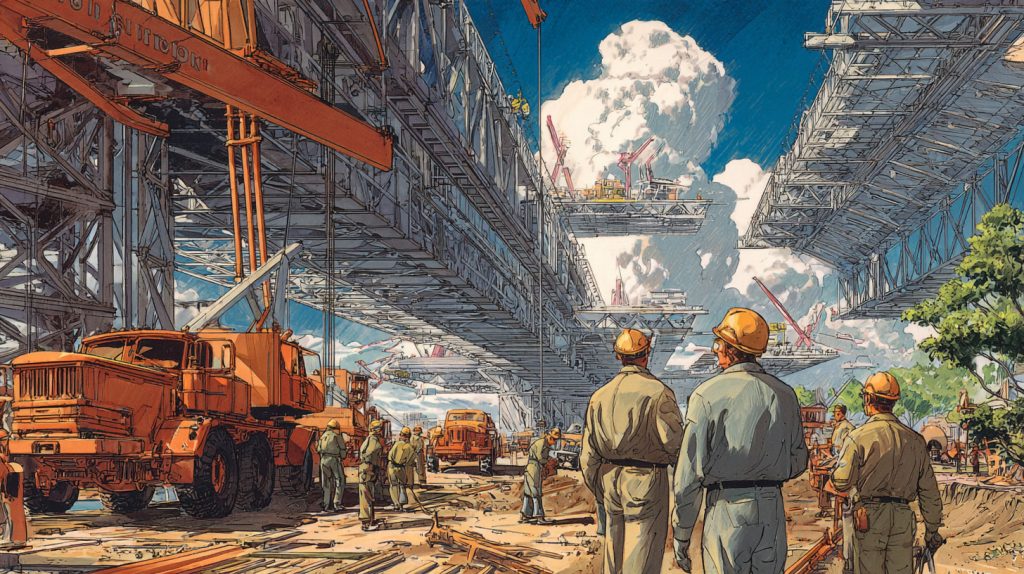
StruxHub
Experience the power of StruxHub today and witness firsthand how it can revolutionize your construction operations.
How Technology Is Modernizing QA/QC for Hyperscale Construction
Gone are the days when QA/QC documentation lived in binders and clipboards. Today, technology is reshaping how quality is tracked, verified, and shared on hyperscale projects. Digital tools allow superintendents to manage inspection workflows, test records, and approvals in real time—turning quality management from a reactive process into a proactive system.
AI-enabled inspection apps, mobile QA checklists, and photo documentation tools now make it easy for teams to record field conditions instantly. Cloud-based dashboards connect quality inspectors, project managers, and commissioning agents, ensuring every stakeholder sees the same verified data. These tools eliminate the confusion that comes from version control errors or misplaced forms.
Machine learning adds another layer of intelligence by detecting patterns in non-conformance reports. If recurring issues emerge—like improper torqueing or mislabeled conduits—the system flags them early so training or process corrections can be made.
In mission-critical builds, technology doesn’t just simplify QA/QC—it enhances accountability. Owners and commissioning teams gain transparency into every inspection, building trust that the finished product meets performance and uptime requirements.
Top Benefits
- Enables real-time field data collection and validation.
- Reduces administrative errors and paperwork delays.
- Identifies recurring issues through predictive analytics.
Best Practices
- Standardize digital QA templates across trades.
- Use photo and video verification for critical inspections.
- Integrate cloud QA platforms with scheduling and commissioning tools.
Q&A Mini Section
Q: How does digital QA improve collaboration?
A: It keeps all stakeholders informed in real time, ensuring issues are addressed before they escalate.
Q: What’s the biggest advantage of mobile QA tools?
A: Inspectors can document conditions instantly, even in remote areas, without returning to the trailer.
Q: Can AI identify recurring quality problems?
A: Yes—AI tracks trends in inspection data to predict where and why non-conformance might occur.
Technology transforms QA/QC from a paperwork burden into a transparent, data-driven process that drives precision and confidence.

Overcoming Common QA/QC Challenges in Mission-Critical Projects
Even with advanced tools, QA/QC programs in hyperscale projects face challenges that can slow progress or threaten reliability. The most common issue is documentation overload. With thousands of inspections, weld checks, and test reports, managing paperwork can become overwhelming without a clear digital strategy.
Another major challenge is trade alignment. Different subcontractors often use varying QA/QC processes, creating inconsistency in data formats and approval timelines. Without standardization, it’s difficult to create a cohesive project record.
Communication gaps also pose risks. If a non-conformance report isn’t shared quickly, the issue may remain unresolved until commissioning, causing delays or costly rework. Finally, fast-track schedules leave little room for error—missing one inspection can disrupt downstream testing.
The solution lies in process discipline and centralized systems. Digital QA platforms like StruxHub unify workflows, enforce standardization, and make documentation instantly accessible to all teams. This keeps the quality process efficient, transparent, and fully traceable.
Top Benefits
- Addresses common inefficiencies in large-scale QA/QC programs.
- Prevents missed inspections and rework.
- Strengthens collaboration across multiple trades.
Best Practices
- Define standardized QA/QC workflows in preconstruction.
- Assign QA leads for each major discipline to ensure accountability.
- Conduct weekly reviews of outstanding inspections and NCRs.
Q&A Mini Section
Q: What causes most QA/QC delays?
A: Poor documentation flow—paper-based systems or inconsistent record-keeping slow approvals.
Q: How can superintendents reduce QA confusion between trades?
A: By standardizing forms, naming conventions, and sign-off procedures early in the project.
Q: Why is communication vital in QA/QC?
A: Because unresolved non-conformances can snowball into schedule delays or performance failures during commissioning.
Addressing these challenges early ensures the QA/QC process supports—not slows—mission-critical construction.
How QA/QC Supports Reliability, Redundancy, and Long-Term Performance
In mission-critical construction, QA/QC doesn’t end at turnover—it defines the long-term performance of the facility. Reliability and redundancy are built, not assumed, and QA/QC verifies that each redundant component functions exactly as designed.
Power and cooling systems, for example, must maintain continuous operation under any condition. QA/QC teams test backup generators, UPS systems, and chillers to confirm failover functionality. Each test result becomes part of the digital record that proves compliance with the facility’s uptime classification (Tier III, Tier IV, etc.).
This attention to detail ensures operational continuity. During post-handover maintenance, facility teams rely on QA/QC data to understand component histories, test intervals, and performance benchmarks. It’s a roadmap for preventive maintenance and future upgrades.
In short, QA/QC builds trust—not just between contractors and owners but between design intent and real-world performance. It’s what transforms a completed building into a dependable, 24/7 operational asset.
Top Benefits
- Guarantees redundancy and system performance under all conditions.
- Provides long-term documentation for facility maintenance teams.
- Reduces risk of downtime or service interruptions post-handover.
Best Practices
- Include redundancy testing in final QA/QC verification.
- Store QA/QC data in accessible cloud archives for facility teams.
- Conduct lessons-learned reviews to improve future QA standards.
Q&A Mini Section
Q: How does QA/QC ensure redundancy?
A: By validating that all backup systems perform simultaneously during stress tests.
Q: Who uses QA/QC data after project completion?
A: Facility managers and maintenance teams rely on it to maintain uptime and plan upgrades.
Q: Can QA/QC impact the facility’s Tier certification?
A: Absolutely—complete, verified QA/QC documentation is required for Tier validation.
Quality doesn’t stop at handover—it sustains the life and reliability of mission-critical infrastructure.
How StruxHub Simplifies QA/QC Management for Hyperscale Projects
Traditional QA/QC processes can overwhelm even the most experienced teams—but StruxHub brings simplicity and structure to this complexity. Built for large-scale construction coordination, StruxHub centralizes quality documentation, inspection tracking, and testing workflows in one user-friendly platform.
Superintendents can assign QA/QC checklists, attach inspection photos, and log results directly from the field using mobile devices. Automated notifications alert teams of pending inspections, while AI analytics flag potential non-conformance trends before they escalate. This ensures quality remains continuous, not periodic.
StruxHub also connects QA/QC data with scheduling, logistics, and commissioning modules. Every test result, inspection, and approval is linked to its specific location, system, and construction phase—creating a fully traceable digital record for owners and commissioning agents.
By automating documentation and providing real-time visibility, StruxHub turns quality management into a smooth, collaborative process. The platform empowers superintendents to enforce consistency across trades, accelerate closeout, and deliver projects that meet the uncompromising standards of hyperscale clients.
Top Benefits
- Centralizes QA/QC workflows, documentation, and sign-offs.
- Uses AI to detect trends and potential quality risks early.
- Integrates with commissioning and project scheduling for seamless closeout.
Best Practices
- Adopt StruxHub early in preconstruction for standardized QA setup.
- Require all subcontractors to log inspections in the same platform.
- Use StruxHub’s analytics dashboards to monitor inspection trends weekly.
Q&A Mini Section
Q: How does StruxHub improve QA/QC reporting?
A: It automates recordkeeping, eliminating manual errors and giving teams instant access to inspection data.
Q: Can StruxHub help with commissioning documentation?
A: Yes—it links inspection data directly to systems, simplifying turnover packages.
Q: What’s the biggest benefit for superintendents?
A: StruxHub saves hours of manual coordination while giving full transparency over project quality.
By combining digital precision with real-world construction needs, StruxHub helps hyperscale teams deliver projects that meet the highest QA/QC expectations—on time and error-free.

FAQ
What is the main purpose of QA/QC in mission-critical construction?
The main purpose of Quality Assurance (QA) and Quality Control (QC) in mission-critical construction is to ensure that every system, material, and process performs exactly as designed to support continuous, failure-free operation. In hyperscale data centers, downtime isn’t an inconvenience—it’s a financial and operational catastrophe. QA/QC programs prevent those failures by enforcing rigorous standards, testing, and documentation at every phase of the build.
QA focuses on prevention—it establishes procedures, training, and inspection standards that reduce errors before they occur. QC, meanwhile, verifies outcomes through inspections, testing, and validation. Together, they form a closed feedback loop where quality is planned, implemented, and confirmed before the project moves forward.
In a hyperscale environment, QA/QC ensures electrical systems, cooling infrastructure, and safety redundancies perform flawlessly under full load. It gives owners and commissioning teams confidence that the facility will meet Tier certification requirements and maintain uptime expectations.
Ultimately, QA/QC is about reliability and accountability. It’s not just a set of forms or checklists—it’s a disciplined system that guarantees precision in design, installation, and verification so that mission-critical facilities deliver uninterrupted performance from day one.
How is QA/QC implemented on hyperscale data center projects?
Implementing QA/QC on hyperscale projects requires careful planning, coordination, and consistency across all trades. The process begins in preconstruction, where the project team develops a detailed QA/QC plan outlining inspection requirements, test procedures, and documentation workflows. This plan becomes the project’s quality roadmap.
During construction, QA teams monitor compliance with the plan, ensuring materials meet specifications and workmanship aligns with standards. Inspectors perform daily checks, document results digitally, and flag non-conformances immediately for correction. QC teams handle verification testing, such as torque checks, continuity tests, and pressure validations, confirming that installations meet design and code requirements.
Technology now plays a key role. Digital QA platforms like StruxHub allow real-time data sharing between trades, engineers, and commissioning agents. Mobile apps capture photos, signatures, and test results instantly, reducing delays caused by manual paperwork.
The implementation process culminates during commissioning, where QA/QC documentation becomes the backbone of system validation. A well-implemented QA/QC process ensures the data center meets uptime standards, client specifications, and operational readiness—all before the first server powers up.
StruxHub
Discover how StruxHub can revolutionize your construction management. Contact us today!
Why is QA/QC more demanding in mission-critical and hyperscale construction?
Mission-critical projects—especially hyperscale data centers—are built to sustain continuous operation with no tolerance for error. That level of reliability requires more stringent QA/QC controls than traditional commercial projects.
Every component in a hyperscale facility has a direct link to performance. A miswired connection or a poorly torqued bolt can disrupt entire systems, risking millions in downtime and breach of service agreements. To prevent this, QA/QC programs are expanded to include redundant verification steps, parallel inspections, and multiple layers of documentation.
Additionally, hyperscale projects involve vast quantities of mechanical and electrical systems—thousands of cable terminations, joints, and welds. Each must be inspected and signed off by qualified personnel. Advanced QA tools such as AI-driven inspection analytics, photo verification, and automated reporting help teams manage this immense volume efficiently.
In essence, QA/QC in hyperscale projects is more demanding because the stakes are higher. It’s not just about meeting construction standards—it’s about safeguarding the integrity of digital infrastructure that powers the world’s largest cloud and AI operations.
What are the most common QA/QC issues contractors face in hyperscale construction?
Even with strong QA/QC programs, hyperscale projects face recurring challenges. The most common issues include inconsistent documentation, miscommunication between trades, and schedule pressure that leads to missed inspections.
Documentation gaps often occur when multiple subcontractors use different forms or tracking systems. Without a centralized platform, important records—like inspection approvals or test results—can be misplaced or duplicated. Miscommunication can also lead to redundant testing or overlooked non-conformances, causing rework and schedule delays.
Another challenge is maintaining quality under fast-track conditions. Hyperscale data centers are often built on aggressive timelines, leaving little room for re-inspection or delays caused by corrective work. To counter this, superintendents use digital QA/QC systems like StruxHub to automate inspection tracking, assign accountability, and provide instant visibility into quality progress.
Ultimately, the key to avoiding QA/QC issues lies in consistency and communication. Standardized processes, integrated technology, and a culture of accountability keep quality front and center—even under intense project demands.
How does StruxHub simplify QA/QC management for mission-critical projects?
StruxHub simplifies QA/QC management by bringing all inspection, testing, and documentation processes into one centralized platform. Instead of juggling spreadsheets, binders, and emails, superintendents can manage everything—from inspection scheduling to non-conformance tracking—digitally in real time.
The platform’s mobile interface allows crews to complete QA/QC checklists, capture photos, and record signatures directly from the field. Automated notifications ensure no inspection is missed, while AI analytics detect trends in non-conformance data to highlight recurring issues before they impact schedule or cost.
StruxHub also integrates QA/QC with logistics, scheduling, and commissioning workflows. Each inspection record is automatically tied to a specific system or equipment tag, making documentation easier to locate during turnover. Owners and commissioning agents gain full visibility into progress through live dashboards.
By replacing fragmented manual systems with an intelligent, unified platform, StruxHub makes quality management faster, clearer, and more reliable—helping contractors meet the rigorous standards of mission-critical construction.
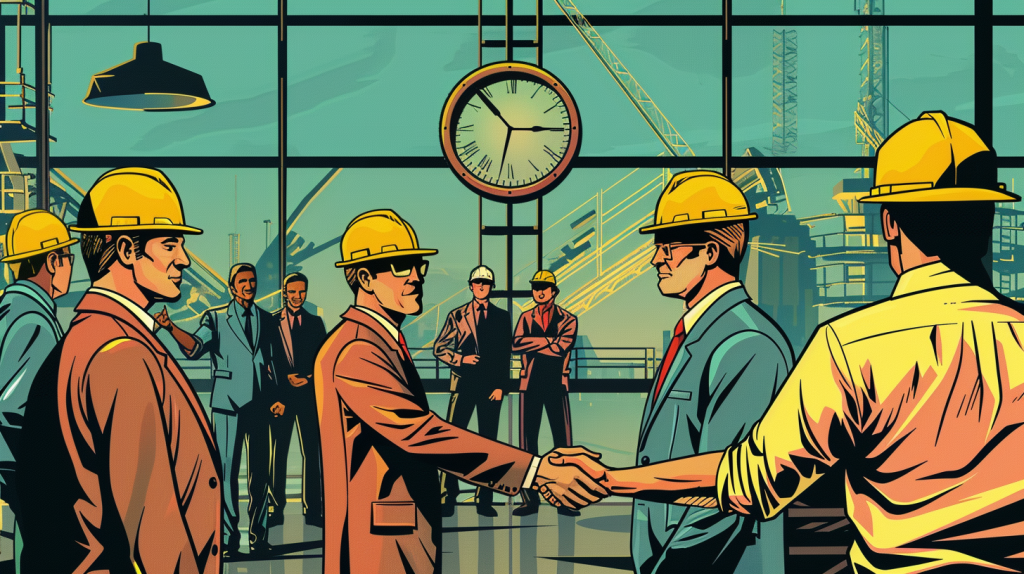
StruxHub
Discover how StruxHub can revolutionize your construction management. Contact us today!
Related Pillar Articles:
Best Guide to Construction Logistics Plans (CLPs): What Owners Want to See Before Work Starts
